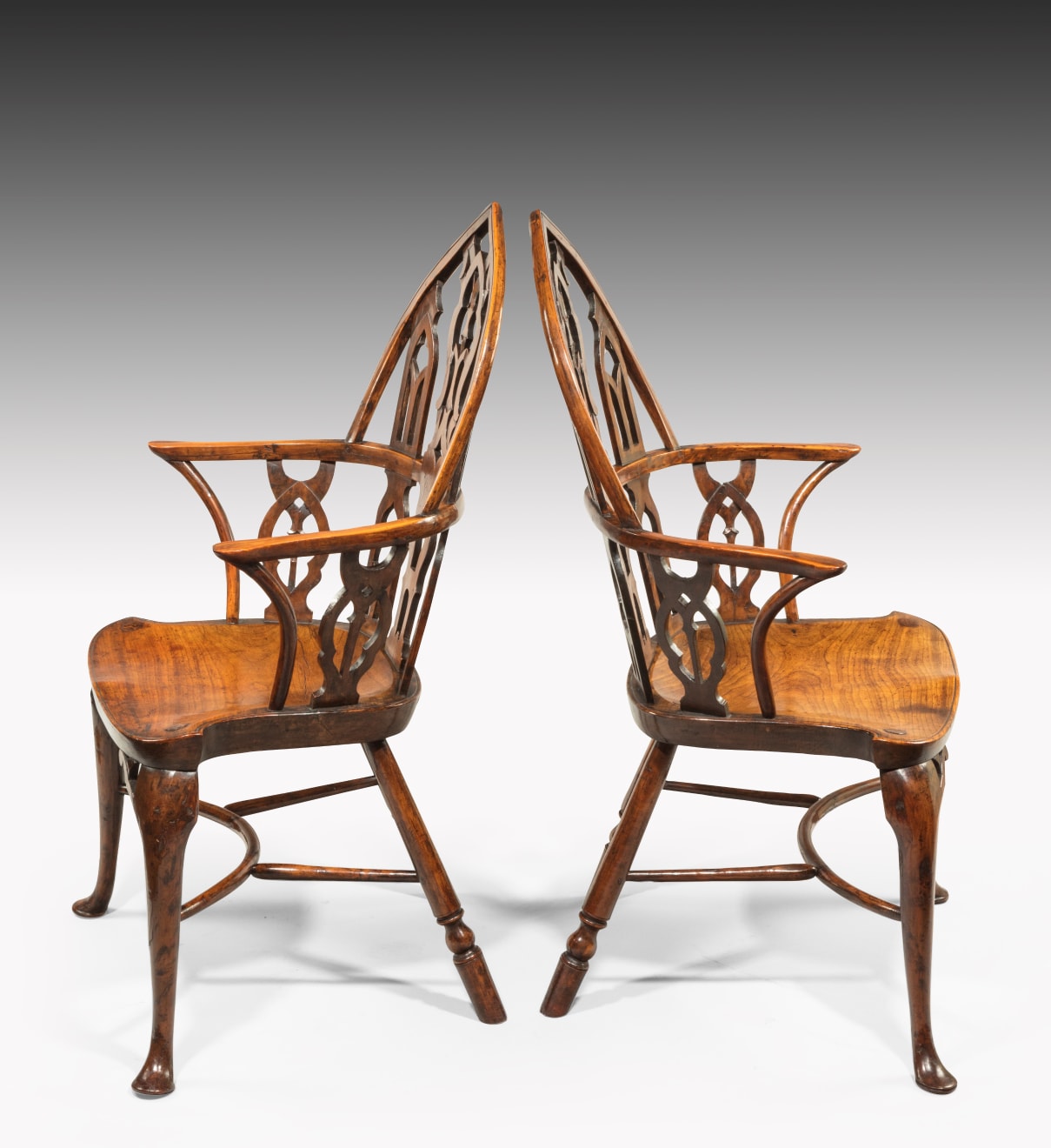Pair of George II Yew Gothic Windsor Armchairs
105 x 67 x 54 cm
Further images
Provenance
Acquired at the Grosvenor House Antiques Fair, in the mid 1950s. By family descent to a Private Collection, USA.A pair of Gothic Windsor armchairs, both with a characteristic top bow made in two parts which join together to form a pointed arch back with a scribed edge line. With an elaborate Gothic tracery fretted central splat and narrower upper and lower fretted splats to either side. The arm bow raised on short fretted splats and crook-shaped front supports, the figured elm bell-shaped seat with pronounced return corners and scribed edge line. Both raised on two well-formed cabriole front legs, with pierced front knee brackets and pad feet. The legs are joined by a crinoline stretcher.
Windsor Chairs: The term ‘Windsor Chair’ is used to describe wooden chairs whose axis of construction is the seat; with the legs jointed up into the underside of the seat board and the superstructure of the chair jointed into the top of the seat board. The most likely reason that they were named ‘Windsor Chairs’ is that they were being made in the Thames Valley area, and that Windsor was the distribution centre from where they were transported to London and further afield.
In his book ‘The English Regional Chair’ (Antique Collectors’ Club Ltd, 1990), Bernard D. Cotton describes Gothic form chairs as ‘the peak of Windsor design’. Ivan G. Sparkes states that the Gothic Windsor Chair is the ‘most unusual of the eighteenth-century chairs’ and that it had a number of names including ‘the Strawberry Hill, Gothic or church-window splat Windsor’. He goes on to explain that ‘[t]he Gothic Windsor had quite a short life (c 1755 – 70)’ (Ivan G. Sparkes, ‘English Windsor Chair’, Shire Publications Ltd, 2000, p.5), being first seen in around 1754, when William Partridge of Banbury advertised a gothic (pointed arch) chair. This ‘Gothick’ style of Windsor Chair is one of the most popular and sought after by collectors. Such chairs are now very rare. The Gothic revival in architecture and furniture was famously reflected in and popularised by Horace Walpole (1717–1797), who purchased Strawberry Hill House in London and remodelled it into a cottage with Gothic tracery windows, which has become synonymous with this style of seating.
A similar Gothic Windsor Chair is illustrated on the cover of Michael Harding-Hill’s book ‘Windsor Chairs: An Illustrated Celebration’ (Antique Collectors’ Club, Woodbridge, Suffolk, 2003). Harding-Hill states that the Gothic chair: ‘is the most sophisticated and elegant of all Windsor chairs and today is the most sought after design’ (p.23).
Another A similar pair of George II Yew and Elm Gothic Windsor chairs, dated circa 1750, were sold by Thomas Coulborn & Sons at the Winter Antique Show, New York, January 2016 to the Metropolitan Museum of New York.








